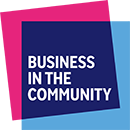What Is Reverse Mentoring?
What Is Reverse Mentoring?
Reverse mentoring has often matched more senior and older colleagues with younger, junior colleagues. Reverse mentoring has evolved to comprise senior leaders being mentored by a more junior colleague who, from a diversity and inclusion perspective, is different from them in some way, and therefore experiences their career differently. Business in the Community’s (BITC) What is reverse mentoring? factsheet explains more about what it involves and how it may offer diversity and inclusion benefits.
Traditional mentoring is centred on the development of junior mentees. In reverse mentoring both the mentor and mentee have an opportunity to learn from each other. The focus of reverse mentoring is to increase the mentee’s inclusion competencies. However mentors are simultaneously provided with the opportunity to learn from their mentee’s experience, knowledge and skills so it can be considered as a career development opportunity for both parties.
What are the benefits of reverse mentoring?
Reverse mentoring is an effective way to build genuine awareness of the barriers faced by Black, Asian, Mixed Race and ethnically diverse employees. Organisations and leaders can demonstrate their commitment to race equality by taking time to get to know employees they may otherwise have no interactions with. Reverse mentoring can challenge established hierarchies and foster a culture where all experiences, skills and ideas are leveraged. Successful implementation of reverse mentoring improves Black, Asian, Mixed Race and ethnically diverse engagement, overall experience and retention.
Black, Asian, Mixed Race and ethnically diverse people value mentors more than other ethnic groups. They are more likely to want a mentor and more likely to value the impact of having one1. They also have a greater desire to expand their personal networks2. We need leaders to act as active sponsors, using their influence to mention the names of the Black, Asian, Mixed Race and ethnically diverse people when development or progression opportunities are being discussed, especially when there are no people from Black, Asian, Mixed Race and ethnically diverse backgrounds in the room during these conversations
About the Race at Work Charter
The Race At Work Charter builds on the work of work of the 2017 McGregor-Smith Review, Race in the workplace. The review found that people from Black, Asian, Mixed Race and ethnically diverse backgrounds were underemployed, underpromoted and under-represented at senior levels. That review concluded that ‘the time for talking is over. The time to act is now.’ BITC launched the Race at Work Charter to support businesses to take action.
The Race at Work Charter contains seven calls to action*:
- Appoint an executive sponsor for race.
- Capture ethnicity data and publicise progress.
- Commit at board level to zero tolerance of harassment and bullying.
- Making equality in the workplace the responsibility of all leaders and managers.
- Take action that supports ethnic minority career progression.
- Support inclusion allies in the workplace.
- Include Black, Asian, Mixed Race and other ethnically diverse-led enterprise owners in supply chains.
* In October 2021 two additional commitments were added to the Race at Work Charter: Support race inclusion allies in the workplace and; Include Black, Asian, Mixed Race and other ethnically diverse-led enterprise owners in supply chains. Find out more about the Race at Work Charter.

IMPROVE WORKPLACE EQUALITY

References
1. Business in the Community; (2018); Race at Work 2018: The Scorecard Report; available at https://www.bitc.org.uk
2. ibid
